The Animator’s Survival Kit is full of walk cycles, it takes up a good section of the book, so it would be foolish not to use this as research.
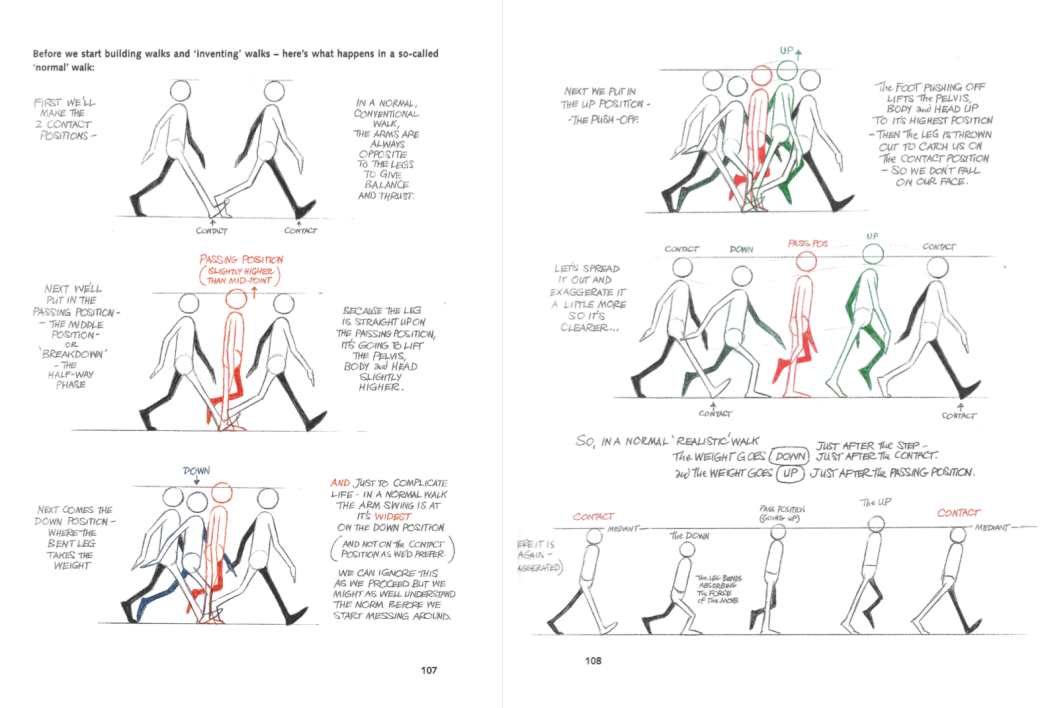 These pages go over the 4 different positions for a walk cycle (contact, down, passing, up). The reason I like these pages is because Williams explains how the walk cycle would be in real life and then states that a different method looks better in animation. For example, Williams says that the arm swing is at its widest in the down position, but he prefers it to be on the contact position.
These pages go over the 4 different positions for a walk cycle (contact, down, passing, up). The reason I like these pages is because Williams explains how the walk cycle would be in real life and then states that a different method looks better in animation. For example, Williams says that the arm swing is at its widest in the down position, but he prefers it to be on the contact position.
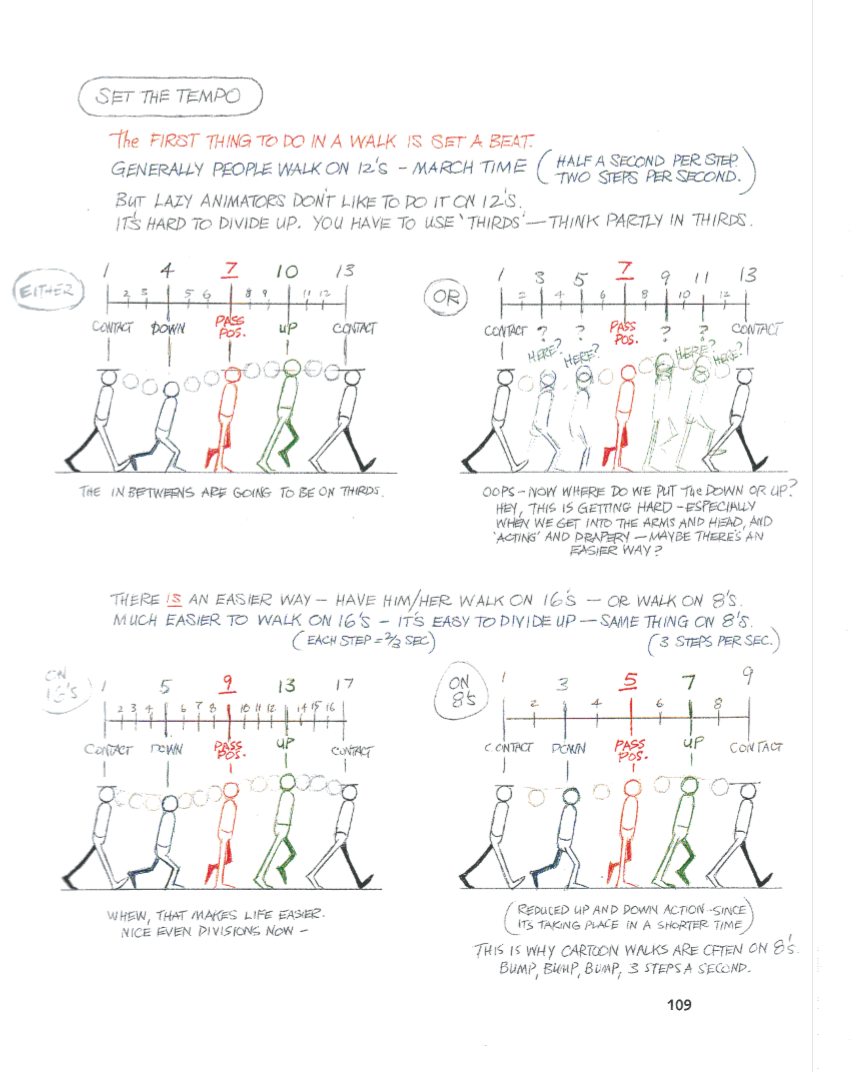 This page is about setting up the tempo of your walk cycle; William explains that it is easier to animate a walk cycle on 16’s or 8’s because its easier to divide up your frames into the key positions.
This page is about setting up the tempo of your walk cycle; William explains that it is easier to animate a walk cycle on 16’s or 8’s because its easier to divide up your frames into the key positions.
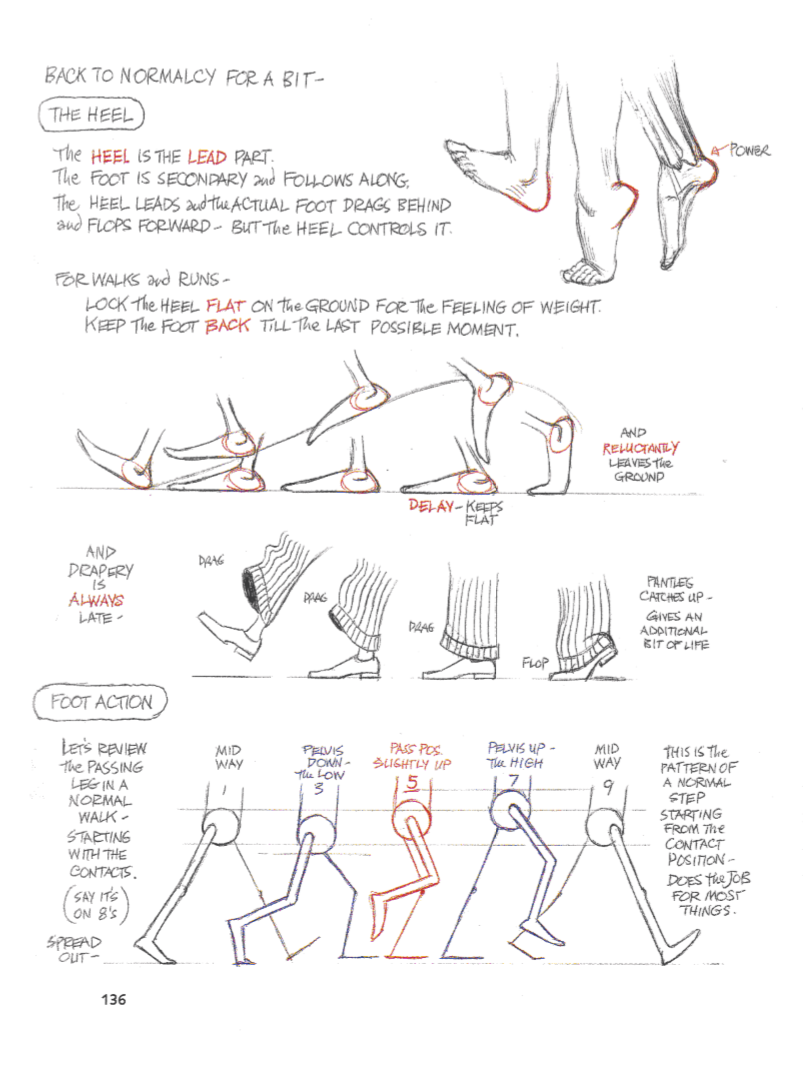 This page is interesting as I didn’t really think about how the heel works in that way; I always thought that the hip drives the knee and the knee drives the foot, but I never thought which part of the foot leads it. Williams states the the foot is secondary to the heel; the foot follows along. This page also explains that the pelvis also moves in a wave motion similar to the head.
This page is interesting as I didn’t really think about how the heel works in that way; I always thought that the hip drives the knee and the knee drives the foot, but I never thought which part of the foot leads it. Williams states the the foot is secondary to the heel; the foot follows along. This page also explains that the pelvis also moves in a wave motion similar to the head.
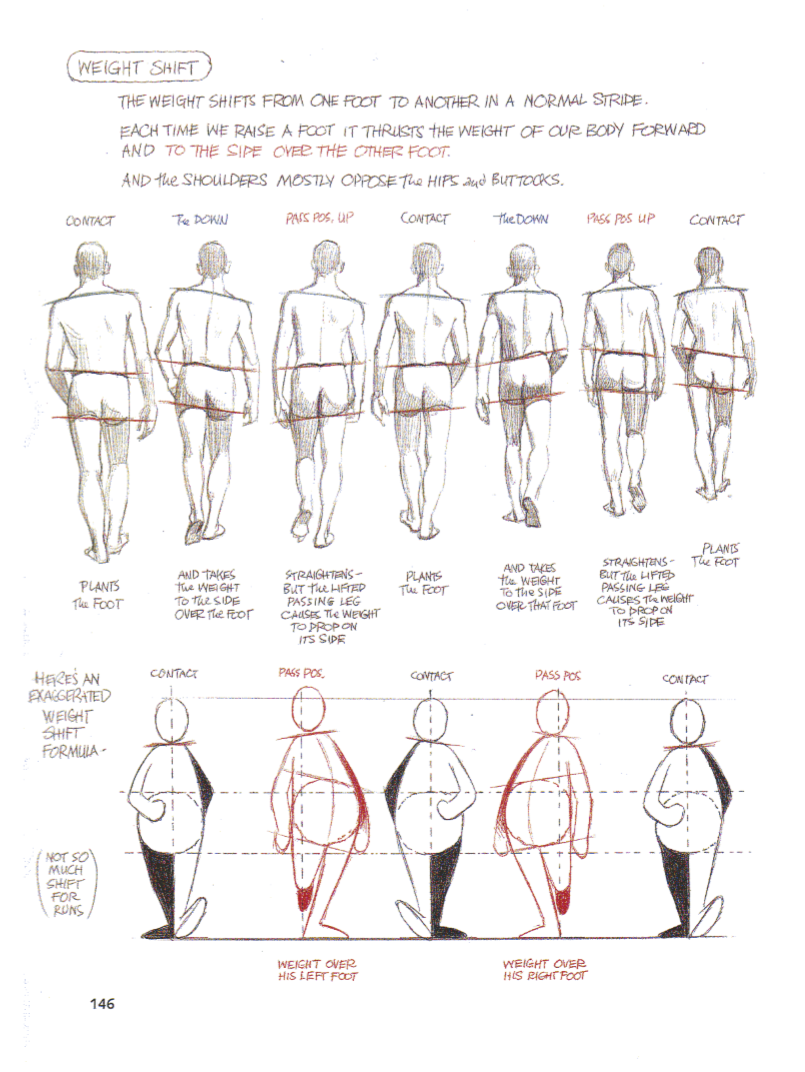
This page is an explanation of the weight shift in a walk cycle. Williams explains the mechanics of a realistic walk, but he also shows an exaggerated version of the same process, explaining how it works in a more obvious way.
 This page goes over arcs in arm movements during a walk cycle and where they are supposed to be in each key position. Williams explains that the arms swing to balance the thrust of the walk and they tend to move in a pendulum like arc.
This page goes over arcs in arm movements during a walk cycle and where they are supposed to be in each key position. Williams explains that the arms swing to balance the thrust of the walk and they tend to move in a pendulum like arc.
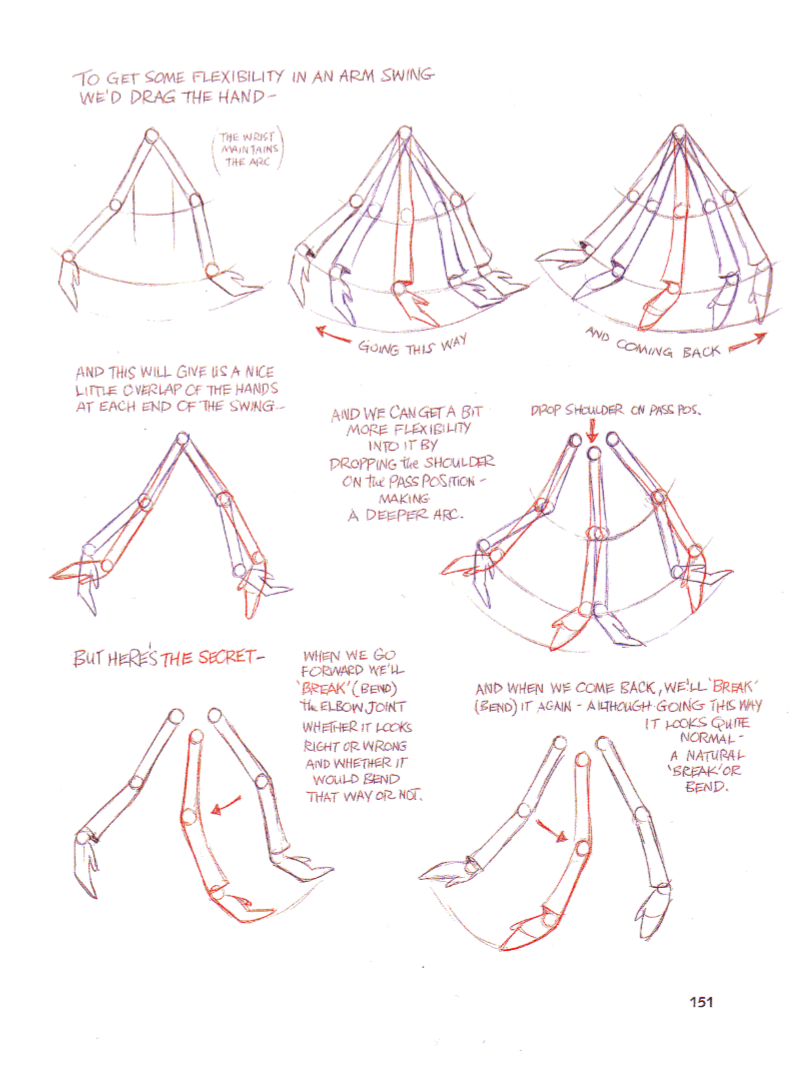
This page looks further into arm movement in a walk cycle, specifically using overlapping action to give the impression of flexibility. Williams also talks about ‘breaking’ the elbow; when the arm moves forward or backwards Williams recommends that we should bend the elbow even when it would not bend in that direction in reality.
Most of what I learned while looking at this book is about arm and leg movement in a walk cycle and how they move in relation to the upper and lower body as they move int their own arcs. This information is really useful and I will try to apply it to my walk cycle animation.